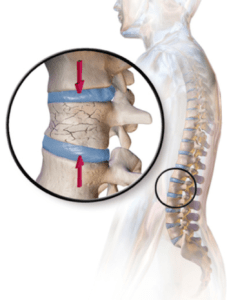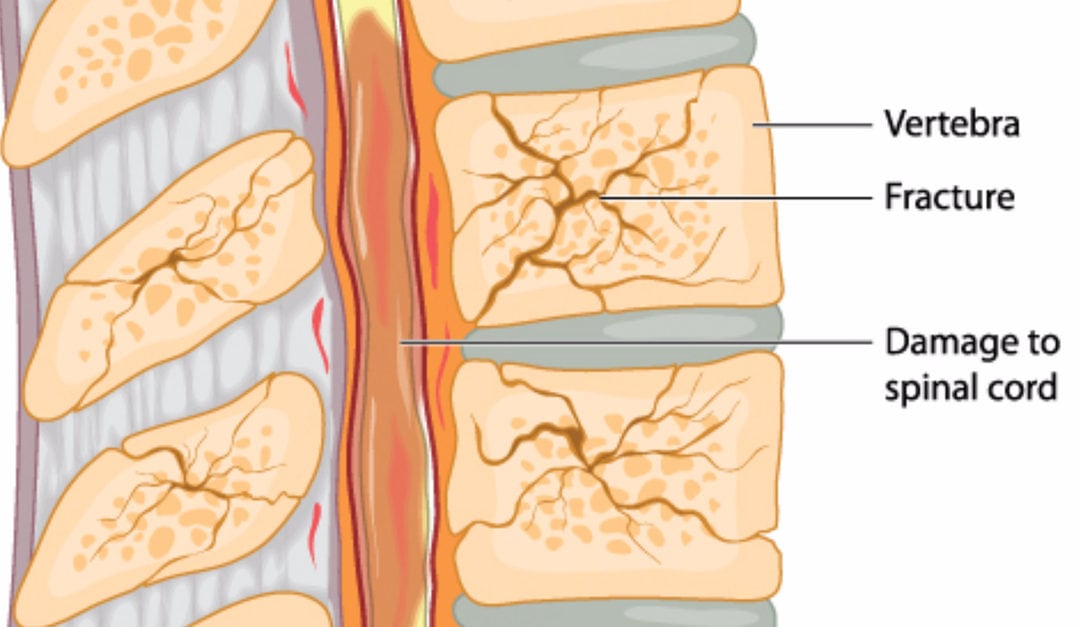Did you know that a spinal fracture is often one of the first noticeable signs of osteoporosis?
It’s true.
And that’s why understanding how osteoporosis affects the spine—and what preventative measures you can take— is an important part of maintaining your bone health. In order to learn more, let’s start with some spine anatomy:
Spine Anatomy
The vertebrae stack on top of one another to form the spinal column to support the body and protect the spinal cord. An injury or medical condition that changes the shape or stability of the spine can lead to physical and/or neurological problems.
Osteoporosis and Vertebral Compression Fractures
The injury most commonly associated with osteoporosis is a vertebral compression fracture. As they age, patients with osteoporosis experience a decrease in bone density and quality.

Illustration 1– A microscopic view. Osteoporotic bone is commonly called “porous bone”.
When osteoporotic vertebrae are weakened, they become narrow and flat. Vertebral compression fracture risk increases and, in some cases, the patient develops an abnormally shaped spine.

Illustration 2– Osteoporosis can cause patients to appear “hunchbacked”
Causes of Osteoporosis-Related Vertebral Compression Fractures
Because osteoporotic vertebrae are weak and fragile, a vertebral compression fracture can be sustained while making simple, everyday movements. Some of the most common are:
- Twisting
- Coughing
- Sneezing
- Reaching
- Walking up steps
Of course, vertebral compression fractures can also result from sudden impacts or accidents. The most common of which being car accidents.

Illustration 3– Vertebral compression fractures
Symptoms of Vertebral Compression Fractures
Pain around the fractured area, usually slightly above or below the waistline, is the main symptom. Pain levels vary depending on the severity of the fracture. Other symptoms include decreased motor function and nerve pain.
Contacting an Spine Specialist
If you’re concerned about your bone health, have been diagnosed with osteoporosis, and/or sustained a vertebral compression fracture please contact our NYC office. Making an appointment is easier than ever—we’ll get you in ASAP.
Dr. Patrick Senatus is a Board Certified Neurosurgeon in New York City with extensive experience in Minimally Invasive and Restorative Spine Surgery. Dr. Senatus employs a personalized patient-centered approach that prioritizes optimum functional outcome and well-being. Each consultation begins with a comprehensive evaluation by Dr. Senatus designed to create an individualized evidence based treatment plan which includes the patient, family, and collaborating providers.
Following a conservative treatment philosophy, Dr. Senatus offers his patients solutions using the most advanced minimally invasive spine surgery. His approach is to perform the most effective and least invasive intervention available, specifically tailored to each patient, guided by the principal that surgical options be considered only after all reasonable non-operative therapies have been exhausted. Returning his patients to a functional pain free lifestyle is the ultimate objective.


Recent Comments